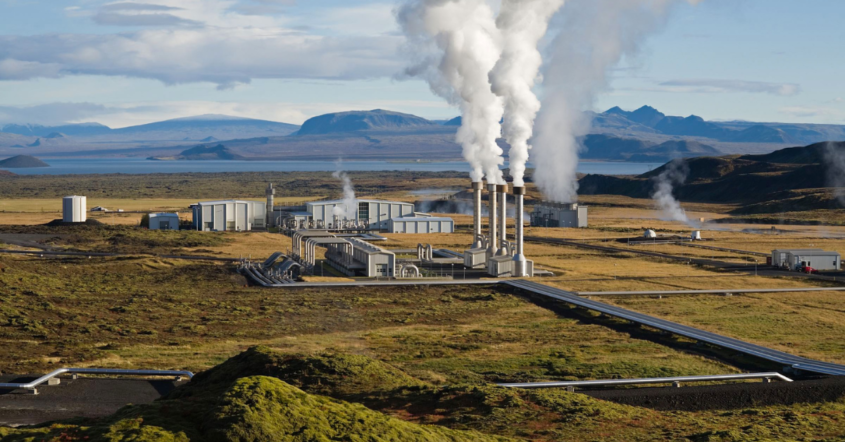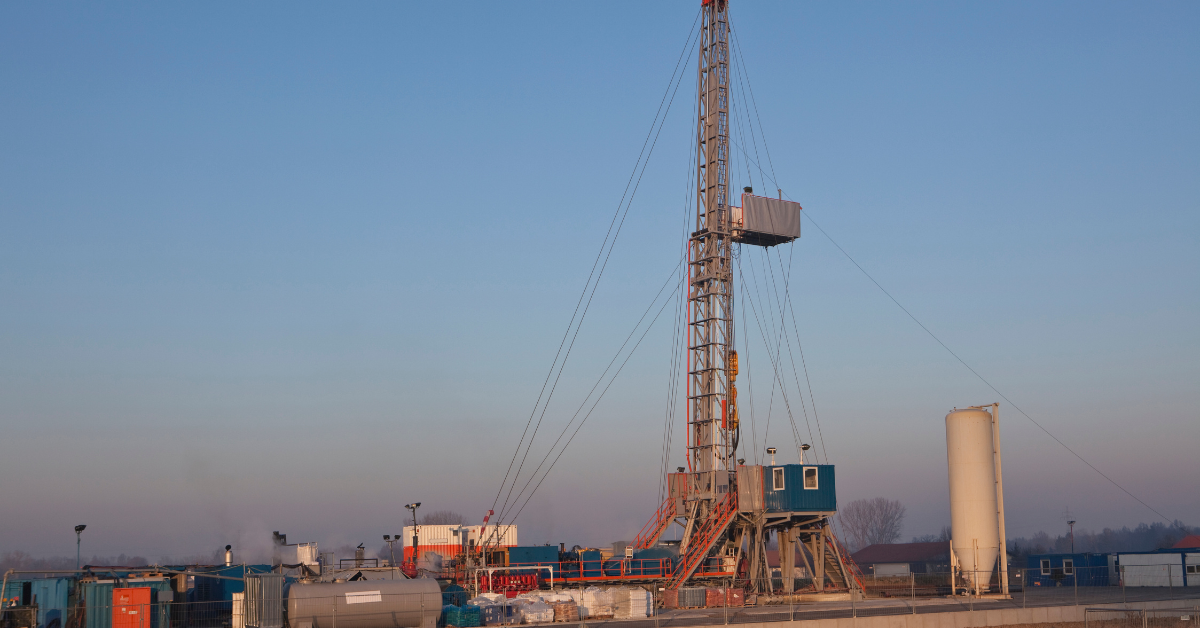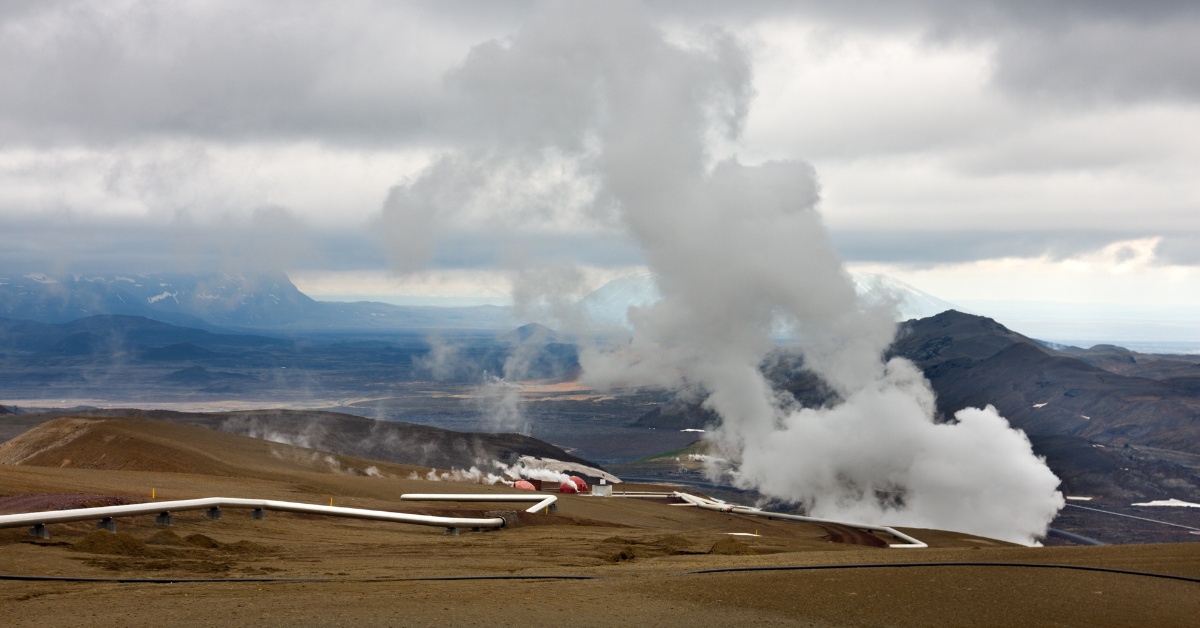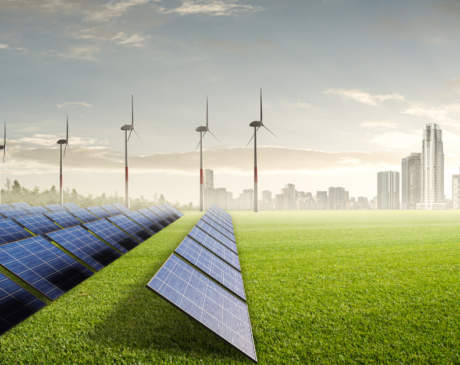What is Geothermal Energy? How Does it Work?

Geothermal energy is a renewable and sustainable source of power that harnesses the heat stored within the Earth’s core. This heat has its origins in the formation of the planet billions of years ago and is constantly generated by the radioactive decay of minerals within the Earth’s mantle.
Geothermal power plants capture this natural heat to produce electricity and heat buildings. Sustainability and renewable energies are gaining more and more ground and the geothermal energy stands out as a reliable and eco-friendly option.
Derived from the Earth’s natural heat, geothermal energy offers a consistent and clean source of power! This article will delve into the intricacies of geothermal energy, explaining what it is and how it works.
What is geothermal energy?
Geothermal energy is the utilization of the Earth’s internal heat to serve as both a heat source and an electricity generator. At the Earth’s core, temperatures can reach an astonishing 9,000 degrees Fahrenheit, where heat is incessantly generated.
This heat is not confined to the core but extends throughout the planet, warming various geological elements, including rocks and water.

The Earth’s surface manifestations of this heat include phenomena like volcanoes, geysers, hot springs and steam vents, which occur when the heat rises and escapes.
Nevertheless, a significant portion of this heat remains trapped in the mantle layer, accumulating in localized pockets of intense thermal energy. It is this stored heat that is primarily tapped into to harness geothermal energy.
How does geothermal energy work?
To comprehend the workings of geothermal energy, one must understand the fundamental processes involved in harnessing the Earth’s heat:
- Heat source: the Earth’s core is incredibly hot, with temperatures reaching up to 9,000 degrees Fahrenheit. This heat emanates from the radioactive decay of elements like uranium, thorium and potassium within the Earth’s mantle.
- Heat transfer: the heat from the Earth’s core gradually moves towards the surface through conduction and convection. This process ensures that there is a steady source of heat available near the Earth’s surface.
- Geothermal reservoirs: underground reservoirs of hot water and steam accumulate in certain regions where the Earth’s heat is relatively close to the surface. These reservoirs are often found near tectonic plate boundaries, where geological activity is high.
- Drilling: to access geothermal energy, wells are drilled deep into the Earth’s crust to reach the hot reservoirs. The depth varies depending on the specific geological conditions of the site.
- Steam and hot water extraction: as wells tap into the geothermal reservoirs, the high-pressure steam and hot water are released. These natural fluids are transported to the surface through pipes.

- Power generation: the extracted steam and hot water are directed to a geothermal power plant, which converts the thermal energy into electricity. There are two main types of geothermal power plants: dry steam plants and flash steam plants.
- Dry steam plants: in areas where the geothermal reservoirs primarily consist of high-pressure steam, dry steam plants are used. The steam is directly piped from the well to a turbine, which drives a generator to produce electricity.
- Flash steam plants: in regions where the reservoirs contain a mixture of hot water and steam, flash steam plants are employed. The hot fluid is depressurized, causing it to “flash” into steam, which is then used to drive a turbine and generate electricity.
- Heat pump systems: geothermal energy isn’t limited to power generation. Heat pump systems utilize the stable underground temperatures to provide heating and cooling for buildings. These systems circulate a heat transfer fluid through underground pipes, allowing the building to maintain a comfortable temperature.
How To harness geothermal energy
The United States leads the world in the generation of geothermal energy, with factories across the country producing over 16 billion kilowatthours of electricity annually. Geothermal power plants have a unique process for generating electricity.
They extract fluids from underground sources, harnessing their thermal energy to produce steam. This steam is then directed through turbines, a critical step in the production of electricity.
What sets geothermal energy apart is its minimal waste output when compared to coal or nuclear power. Typically, there are four primary types of geothermal power plants in operation:
Dry steam power plant
Dry steam power plants are designed to make the most of hydrothermal fluids, which consist of a mixture of water and steam. In these plants, steam is channeled through pipes into a turbine, where it drives a generator, thus producing electricity.
After passing through the turbine, the steam is condensed back into liquid form and reinjected into the underground reservoir, ready for another cycle. This type of geothermal power plant is the oldest and dates back to its discovery in 1904.
Geysers, naturally occurring pockets of pressurized boiling water that violently erupt from the ground, serve as the primary source of steam. These geysers typically have a temperature averaging around 212 degrees Fahrenheit, making them ideal for geothermal power generation.
Flash steam power plant
Among the most prevalent geothermal power plants currently in operation are flash steam power plants. These plants differ from dry steam plants in that they don’t rely on hydrothermal fluids; instead, they pump water with temperatures exceeding 260 degrees Fahrenheit from underground to the Earth’s surface.
As this water rushes through a high-pressure pipeline, it undergoes a process known as “flashing,” rapidly transforming into steam.
The newly formed steam then follows a process similar to that in dry steam power plants. It passes through a turbine to generate electricity and is subsequently routed back into another pipe, where it returns to the reservoir.
The “flashing” process is reversed as the steam cools and becomes liquid water once again.
Binary-cycle power plant
The most recent innovation in geothermal power generation is the binary-cycle power plant, which is designed to harness lower-temperature geothermal resources.
This adaptability allows them to be deployed in a wider range of locations for electricity production. These power plants employ a unique type of fluid known as “binary fluid,” which has a lower boiling point compared to water.
The geothermal fluid is routed through a heat exchanger, causing the binary fluid to boil and transform into steam. This steam then powers the turbine, generating electricity.
The use of binary fluids offers enhanced flexibility and makes this type of geothermal power plant the only one that generates zero harmful emissions, making geothermal energy generation exceptionally environmentally friendly.
Geothermal heat pumps
Geothermal heat pumps are a popular choice for residential heating systems. As the name implies, these systems leverage local geothermal fluids to provide both heating and cooling to homes.
They operate using a “ground loop” system, where underground fluids are circulated through a network of pipes buried beneath the ground’s surface, mixing with a water solution in the process.
Once the fluid reaches an adequate temperature, it is directed to the surface, where a heat pump captures the thermal energy and transfers it into the home’s ductwork system as warm air.
Geothermal heat pumps are highly efficient and are used in both commercial and residential properties. Unlike solar energy systems, property owners have more control over the output of a geothermal system.
However, similar to geothermal power plants, the viability of geothermal heat pumps can be location-dependent.
Geothermal energy is a fascinating and sustainable source of power that harnesses the Earth’s natural heat. By tapping into geothermal reservoirs and utilizing advanced technology, we can generate electricity, heat our homes and reduce our reliance on fossil fuels.
While geothermal energy has its challenges, its numerous advantages make it a crucial component of our clean energy future.
As technology advances and we find new ways to access and utilize geothermal resources, we can expect this form of renewable energy to play an increasingly significant role in our energy mix.



